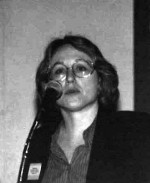Nel Caine (Niwot Ridge) and Gordon Grant chaired a workshop on hydrology and biogeochemical cycling that attracted over 50 participants from 15 LTER sites, the U.S. Geological Survey, the National Park Service, and several other institutions. Objectives included sharing information about the direction and scope of current work in this area among the various sites and related activities in other agencies, and exploring opportunities for future intersite work. It was suggested that understanding hydrological and biogeochemical processes is one of the major themes linking all LTER sites.
Hydrologic features and flowpaths at LTER sites span a considerable range of types and spatial and temporal scales. Major hydrologic landforms represented include lakes, marshes, estuaries, ephemeral washes, intermittent streams, perennial channels, and small rivers. Sites vary in terms of the relative proportion of flow following surface or subsurface pathways, and the sequence of flowpaths within a site.
While in most sites flowpaths are gravitationally driven and thus unidirectional, some coastal sites (i.e., North Inlet) have bidirectional fluxes driven by tidal fluctuations. Different sequences of flowpaths provide different opportunities for interaction among water, vegetation and soils which is then reflected in the water chemistry.
Spatial and temporal scales of interest vary widely between sites, ranging from plot scale studies of storm response and diurnal variations in soil moisture to landscape-level studies of trends in lake chemistry or rainfall-runoff relationships extending over decades.
Common themes that emerged from a “roll call” of related research activities by site were:
- An interest in characterizing flow pathways, particularly exchanges between different landforms
- Controls on movement and transformation of elements (water, sediment, nutrients, organics), particularly the degree of coupling between hydrologic and biogeochemical phenomena
- The role of disturbance in modifying flow paths and fluxes
- The importance of viewing flow phenomena within a broader landscape context
The importance of the LTER Network within the larger physical and biogeochemical science community was emphasized in a presentation by George Leavesley, a U.S. Geological Survey hydrologist involved with the Survey’s Water, Energy, and Biogeochemical Budgets (WEBB) program. This program, part of the Survey’s in-house global change initiative, is designed to fund process-level studies relevant to climate change.
Two LTER sites (North Temperate Lakes and Luquillo) were among the five WEBB sites chosen in FY ‘91; Coweeta, Andrews, Konza and Bonanza will be among those considered for FY ‘92 funding. The WEBB program demonstrates the growing recognition that LTER sites are key areas for interagency, interdisciplinary research into the biological and physical
implications of global change.
Topics proposed for future activities included: an examination of the relative importance and degree of interaction between land-use and climate-imposed changes in hydrologic regimes; an intersite comparison of streamfiow generation processes, particularly the interaction between groundwater and surface water. The importance of linked biogeochemical and hydrologic studies, particularly those using isotopes and tracers, was also emphasized.
An ad-hoc working group is currently investigating holding a workshop which would develop alternative conceptions of flow generation and pathways in several different sites. This might lead to an actual modeling exercise to compare the response of different sites to scenarios of changing climate and land use, an approach which would fit in well with the work of Leavesley and his colleagues to develop a common hydrologic modeling framework.
Future activities might include symposia co-sponsored by groups such as the ESA, linkage of computer networks, and increasing visibility of the Network as a forum for interdisciplinary work.

 Enlarge this image
Enlarge this image